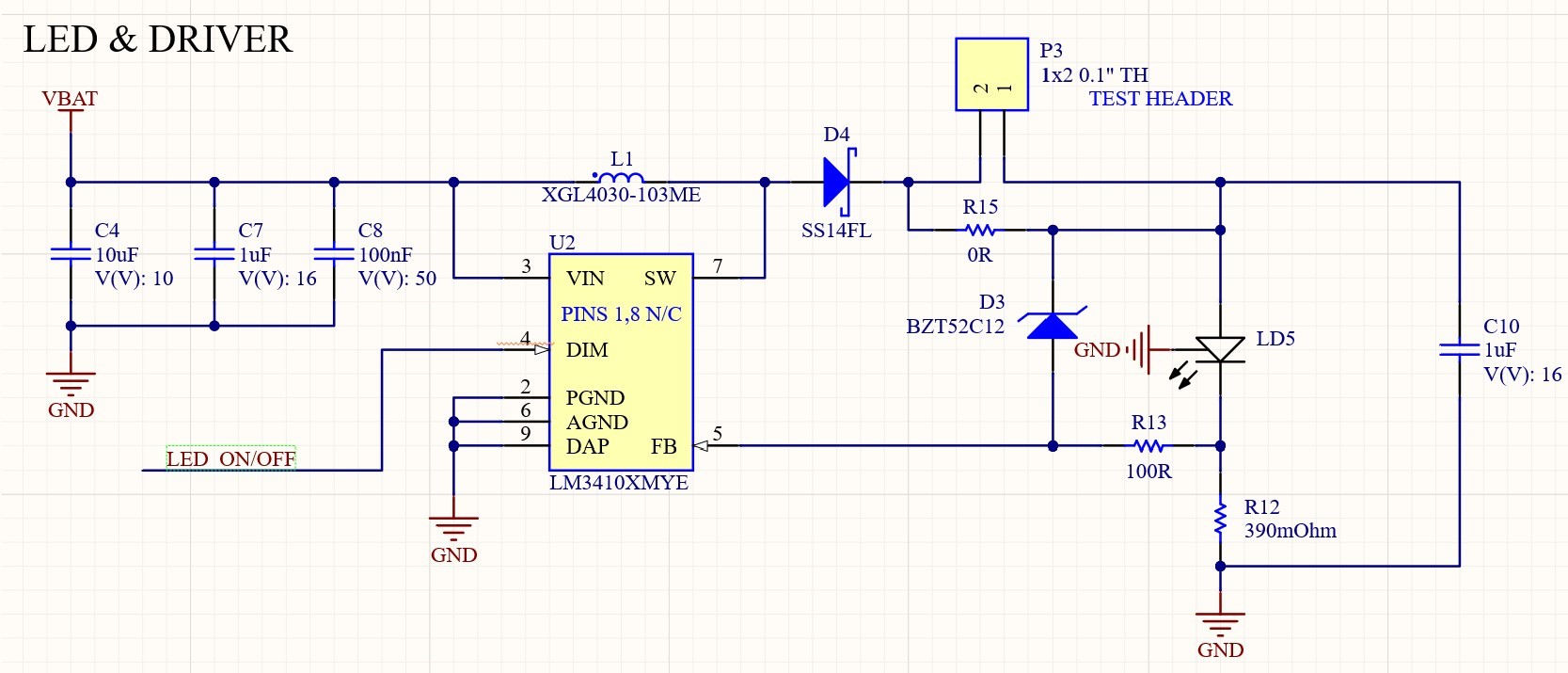Hello,
Exact p/n: LM3410XMYE/NOPB in MSOP-8 with thermal pad.
I am having issues getting this circuit to behave as expected. I have checked for shorts between each of the pins, and that seems OK. Vin = 3V with Vf(min) = 5V for the LED. For now, the protection circuit has been removed (R13 = 0R, D3 is removed).
I notice that Vled measures as 5V (so it is boosting) but the current draw isn't right. With Rfb=390mOhm I would expect that Iled=500mA. But I'm seeing a total current draw of 120mA, including all the other circuitry on the board. So something isn't working right. And I measure about 15mV at pin 5 (FB). I believe that should be around 200mV. How could that be lower?
P3 is a 2-pin jumper, right now shorted out. Eventually, I'll use that to verify the LED current.
Here is a screenshot of the schematic:
Below is a scope shot of the inductor voltage (pin 7):
Any pointers on where to look to figure out why the current isn't right?
James.


